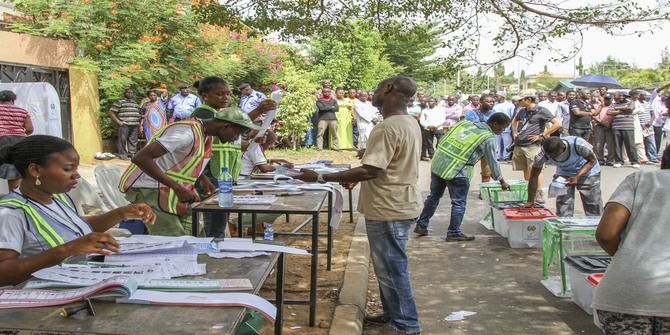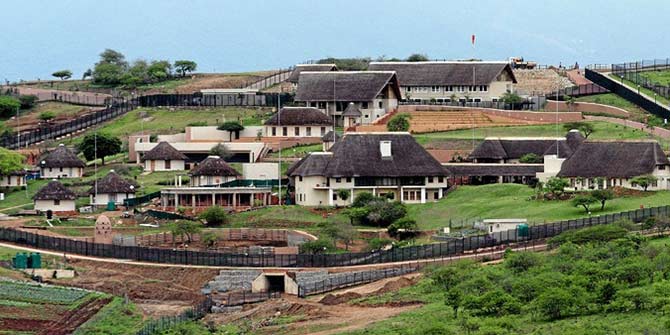LSE alumnus Olivier Bucyana argues that Burundi’s recurring crises occur because the root causes of decades-long conflicts have not been addressed.
The year is 1993. October 21 to be precise. The streets of Bujumbura, Burundi’s capital city, are quiet when around 2:00 am, gun shots and loud explosions are heard around the presidential palace. Bujumbura’s residents are plunged into total confusion as the army’s 11th Battalion and Presidential Guards clash. Communication is cut and the whereabouts of Burundi’s fourth but first democratically elected president, Melchior Ndadaye, are unknown. News of President Ndadaye’s assassination along with some of his collaborators triggered a series of killings that plunged Burundi in a 12 year-long civil war that claimed about 300,000 lives and displaced an estimated 1.2 million people between 1993 and 2002. This was not Burundi’s first coup d’état. The first two Presidents – Michel Micombero and Jean-Baptiste Bagaza – were ousted through military coups, ironically, the same way they both got to power. Under the auspices of first Julius Nyerere of Tanzania, then of Nelson Mandela, the Arusha Peace and Reconciliation Agreement was finally signed in 2000 after many years of backroom negotiations. Five years later a new Constitution was adopted by referendum and the same year current President, Pierre Nkurunziza, was elected by members of parliament as stipulated in the Arusha Agreement.

Burundi refugees at the Mahama refugee camp, Rwanda.
Photo credit: EU/ECHO/Thomas Conan
CC BY-NC-ND 2.0 (Via Flickr http://bit.ly/1K5Wbwy)
Twenty-two years after the 1993 events, Burundians find themselves, once again, facing another political turmoil. Amid tensions, President Nkurunziza declares himself candidate for the presidential elections for the third time even though the Constitution only allows a five year mandate, renewable only once. On May 5, the Constitutional Court cleared the way for a third term. In the wake of deadly protests, General Godefroid Niyombare launches a military offensive in an attempt to overthrow President Nkurunziza who is, at the time, attending a summit in Tanzania. The coup plotters encounter resistance from soldiers loyal to President Nkurunziza and are forced to surrender two days later. Defying all critics and calls to step down, President Nkurunziza returns and wins the July presidential elections which the African Union refused to observe on the basis that “the necessary conditions” were not met to organise “free, fair, transparent and credible elections”.
As this year’s political crisis brought flashbacks of 1993, thousands have abandoned everything and have fled to neighbouring countries. With some of their belongings, an estimated 196,654[1] trekked for hours and some days to find safety like many others did before them. The Democratic Republic of Congo (DRC) is currently hosting 14,322[2] and another 14,464[3] are in Uganda. In Rwanda, the number of registered refugees reached 69,544[4]in late September with the majority hosted in the Mahama Refugee Camp in Kirehe District, 270km from Kigali, the capital city. To reach Tanzania, many crossed by foot, hopped on a boat and headed to Kigoma. The boat, the old MV Liemba – previously known as the Graf Goetzen when it started operating in 1913 – is the same ferry that has transported refugees across the lake for the past four decades. Once in Kigoma, they headed to Nyarugusu, one of the oldest camps in the world. Set up in 1997 to host a maximum of 50,000 refugees fleeing the Democratic Republic of Congo (DRC), the Nyarugusu Camp had to find extra space to host over 98,277[5] Burundian refugees in addition to the 65,000 already living in the camp since the DRC mass exodus in 1997. With the multiple crises Burundi faced since the early 1970s, many are fleeing their homes for the second or third time and are joining other Burundian refugees who have never returned home. In fact, according to the Red Cross, 80% of those fleeing to Tanzania have been refugees in the same camp a few years back. The mass exodus of Burundians dates back to 1972, four years before President Micombero was ousted by the then Army Deputy Chief of Staff, Jean-Baptiste Bagaza. That year, up to 200,000 were killed and hundreds of thousands fled to neighbouring countries. After 40 years in exile, last year, Tanzania granted citizenship to 200,000 refugees and their children, most of whom were born in camps. Thousands of others have returned home. Today, many of the 1972 returnees in addition to the 1993 returnees are going back to the camps they once left.
The current political crisis in Burundi is once again affecting the poorest and will have long lasting consequences in the country and the region. In the past, the hardships endured by Burundian and other refugees had enabled various groups operating in the region to recruit within refugee camps and launch cross-border attacks. Some of the groups that attacked Burundi in the 1980s drew support and recruited within refugee camps. The same happened in the early 1990s following the coup against President Ndadaye. As Burundi faces its current crisis, the country’s security services recently reported alleged recruitments and rebel attacks on military outposts. A sign that history may be repeating itself once again?
Another troubling fact about the Burundians fleeing their country is their age group. Almost 55% of them are below the age of 18 and are in many cases fleeing unaccompanied. At such a young age, the disruption of their family structures could deeply impact their physical and psychological well being. The overall effects of conflict – losing family members and being forced to leave all that is familiar behind– causes psychological distress that can hold dire consequences long after the traumatic events they faced have passed. Integrating new environments, learning new languages, and the need to adapt to new cultures and educational systems in host countries is a long process that needs special and costly measures in place. The sudden departure of thousands of Burundians has also had a negative impact on their local communities as they represented an important labour force. Kirundo is an example of an already vulnerable province where the old and frail who stayed behind find themselves facing malnutrition due to the thousands of departures. Moreover, according to the country’s General Prosecutor, the political turmoil cost Burundi an estimated US$32.6 million in material damage since the end of April.
The recurring crises in Burundi remind us that the root causes of conflicts must be addressed to both avoid a never-ending cycle of violence but also to prevent having generations of families living in refugee camps in a quasi-permanent condition of statelessness. The likes of Nyarugusu in Tanzania but also Dadaab in Kenya, which hosts approximately 332,455 refugees, also highlight the importance of both the need to hold frank discussions on the state of refugees today and the need to better manage conflicts rather than applying Band-Aid solutions that only address their symptoms. Amid the violence and despair, Burundians have shown time and time again their ability to bounce back. The long negotiations that led to the Arusha Peace and Reconciliation Agreement is proof of their resilience and unshakeable faith in their country’s ability to recover from conflict. As Burundi faces this crisis, its famous and sacred drums will echo louder than the gunshots on the country’s rolling hills.
This post was first published on Africa In Perspective.
Olivier Bucyana is a LSE alumnus. Follow him on Twitter @OlivierBu1.
The views expressed in this post are those of the authors and in no way reflect those of the Africa at LSE blog or the London School of Economics and Political Science.
[1] As of October 1st 2015
[2] As of September 22nd 2015
[3] As of September 22nd 2015
[4] As of September 30th 2015
[5] As of October 1st 2015






1 Comments